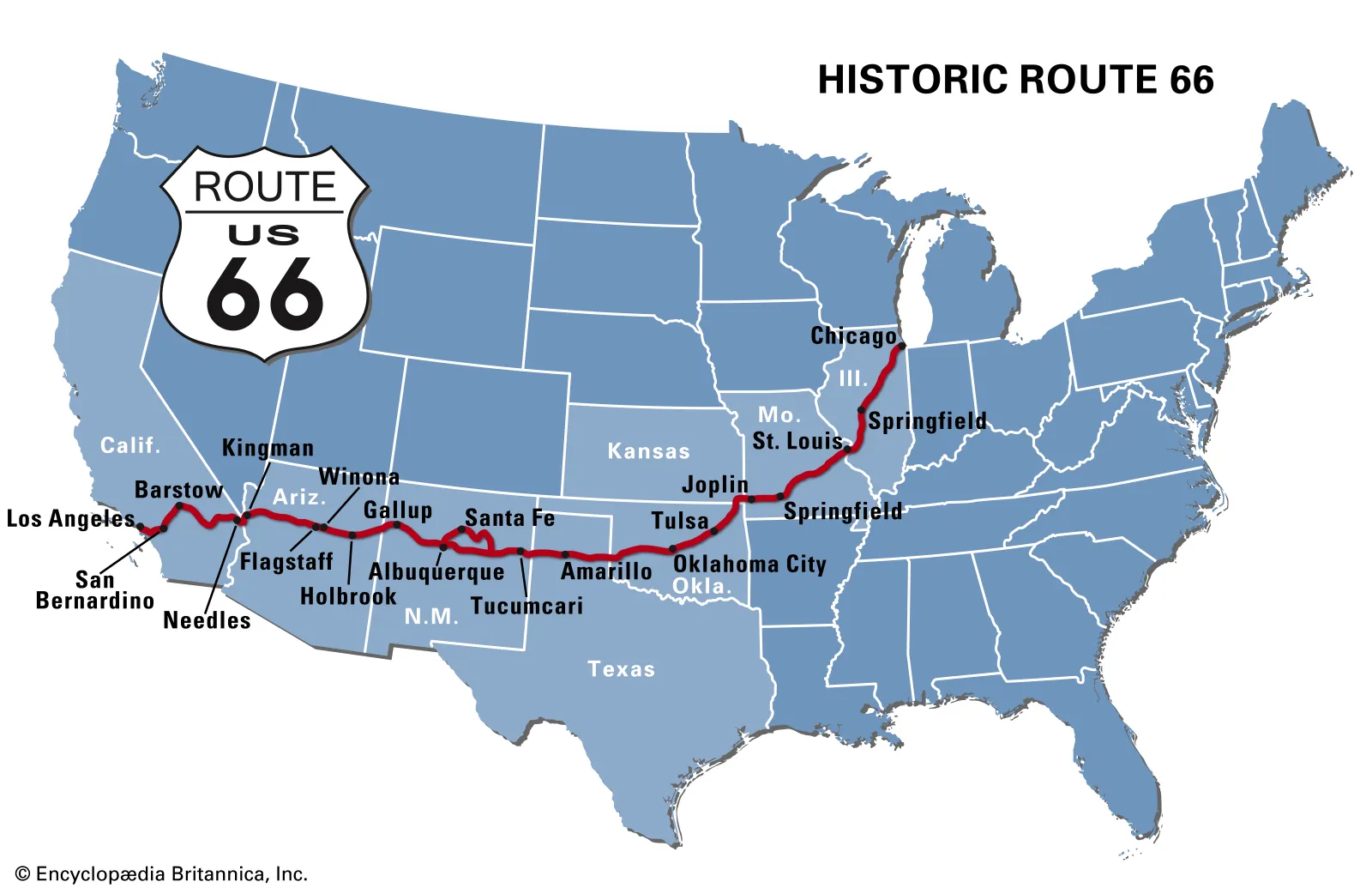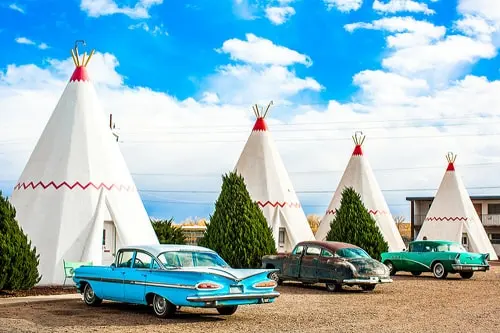Since the late 1920s, droves of Americans have been getting their kicks on Route 66. Traversing eight states and three different time zones, the historic highway has long captured the imagination of the American traveler and the essence of the American road trip. Here’s a look at the history of Route 66 and its enduring fame.

A Brief History of Route 66
US Route 66, or US 66, was established in 1926 and became the first all-weather highway connecting the major cities of Chicago and Los Angeles. The shortest year-round route linking the Midwest and the Pacific Coast, Route 66 was a bustling artery that gave small towns access to cross-country highway. During the Dust Bowl, an estimated 210,000 people migrated to California in a bid to escape financial hardship.

Old Route 66, as it’s sometimes known, was also a means for farmers to sell their crops in more places, and for truckers to find safe transportation even in the winter months. Later on, as the US joined the fray in the Second World War, Route 66 became a go-to path for the rush of military supplies and personnel to bases in the West.
When the War ended, the significance of Route 66 did not. The automobile took its place as a pillar of the American lifestyle, and the open road—and Route 66—came to symbolize freedom, optimism, and individualism. Although the route was decommissioned in 1985, its synonymity with American culture made Historic Route 66 an obvious choice for preservation.
In 1990, Congress passed the Route 66 Study Act of 1990, finding that Historic Route 66 had become “a symbol of the American people’s heritage of travel and their legacy of seeking a better life.” Consequently, the Route 66 Corridor Preservation Program was created in 1999, and the Route itself was designated an All-American Road.
Why Is Route 66 Famous?
This rich and long-standing history accounts for much of Historic Route 66’s fame. However, travelers are also drawn in by the unique places featured along the way. Many tourists visit or stay in the Route’s iconic roadside motels. Among the most famous are Wigwam Motel, with its teepee-inspired design, and Blue Swallow Motel with its pink stucco walls and legendary hospitality. Both are listed in the National Register of Historic Places.

Historic Route 66 also offers quirky roadside attractions you won’t find anywhere else! Elmer’s Bottle Tree Ranch, for example, is an art installation of more than 200 “trees” made of colored glass bottles. The notable Easter Island-inspired “Giganticus Headicus” statue is also a popular attraction. These and other unusual sights ensure that Historic Route 66’s spirit of individualism lives on in the modern-day.
Here at Scenic America, we’re working to preserve the Scenic Byways, landscapes, and towns that define our nation’s visual character. Read about our principles of conservation, see what we’ve accomplished in 2021, or sign up for our newsletter to stay up-to-date on our work and how you can help.
Scenic America’s mission is to preserve and enhance the visual character and scenic beauty of America. Donate today to help us protect our beautiful places and the heart of our country’s character!